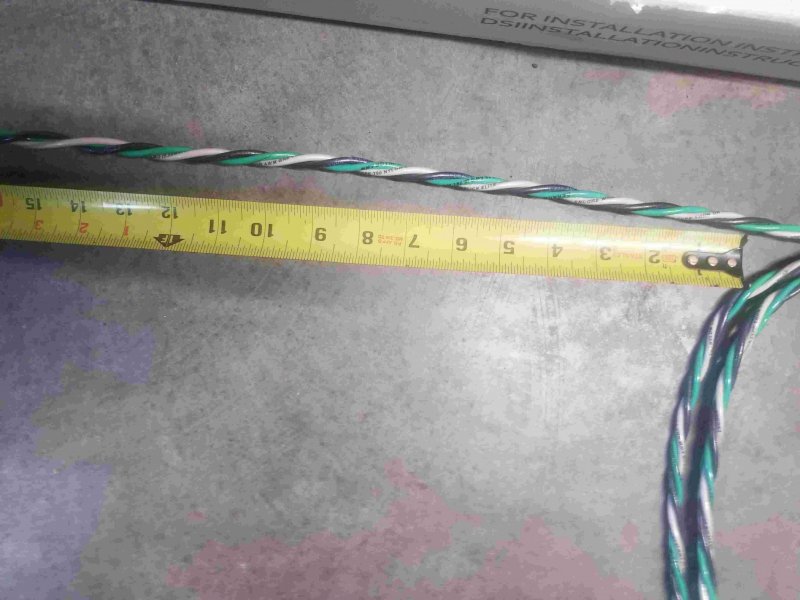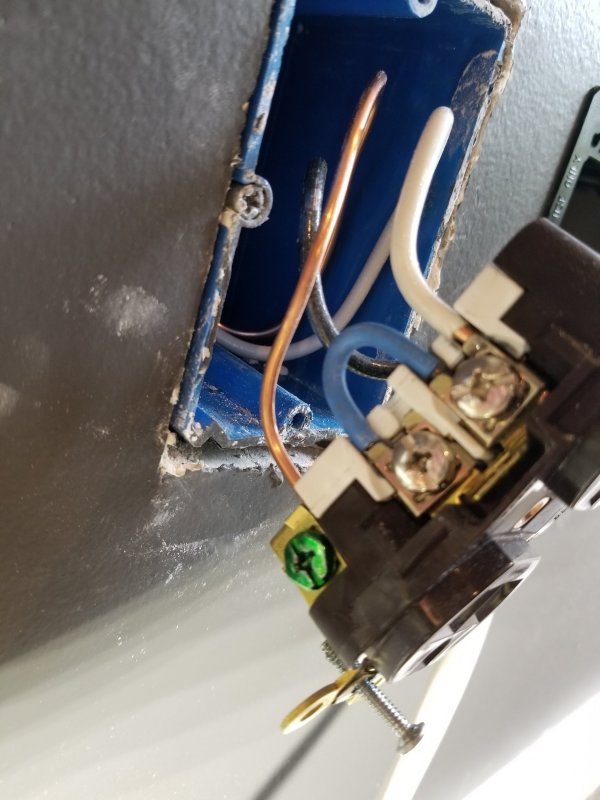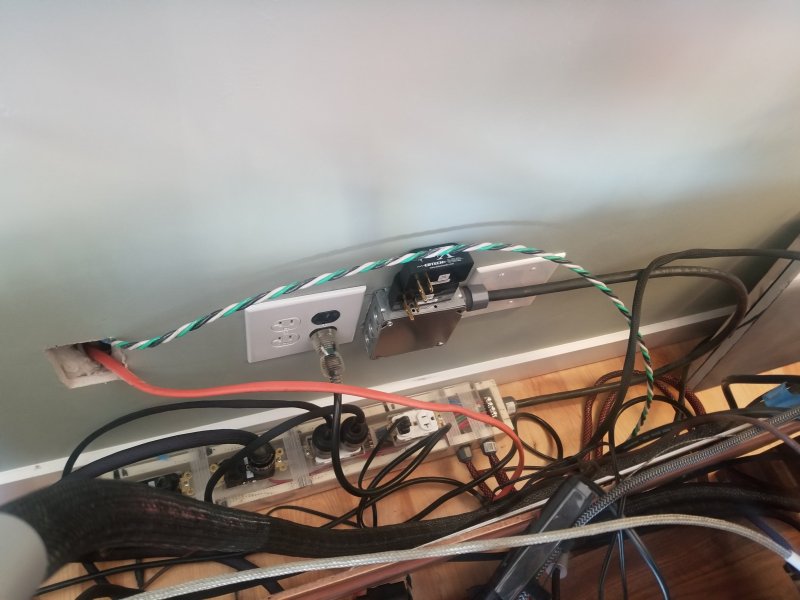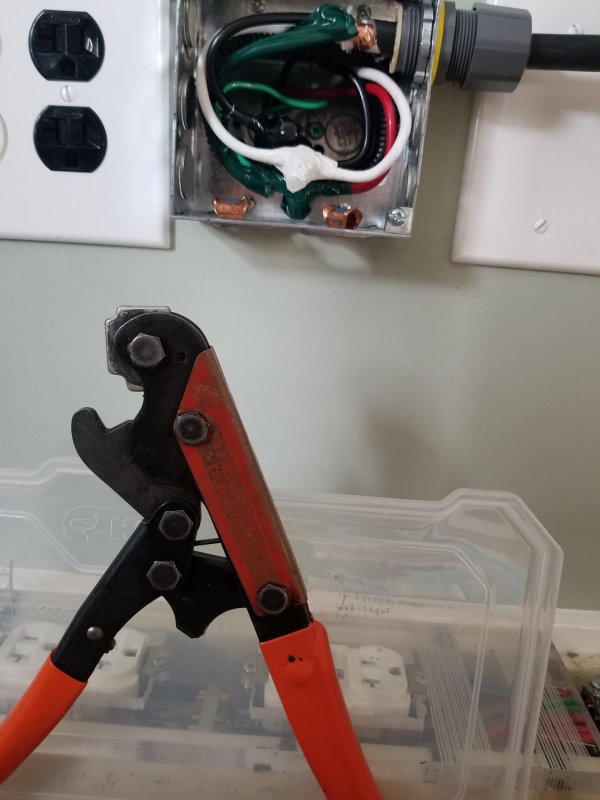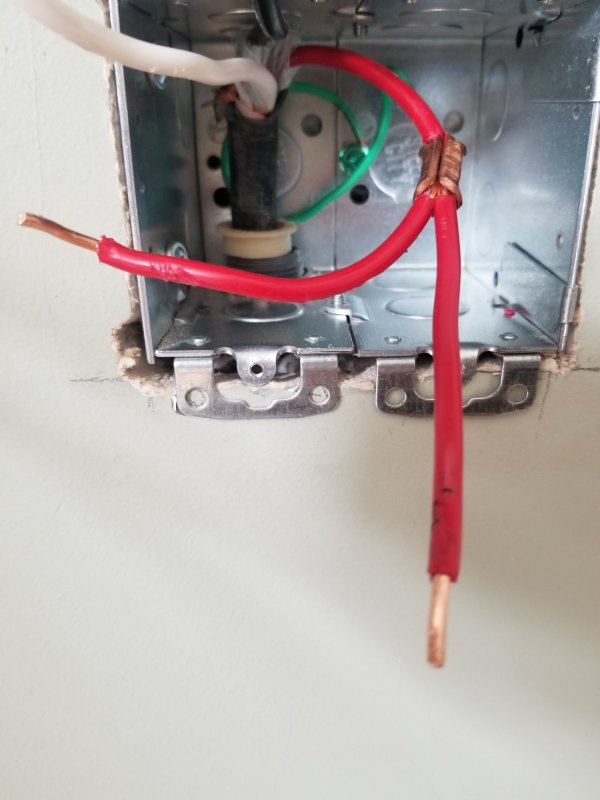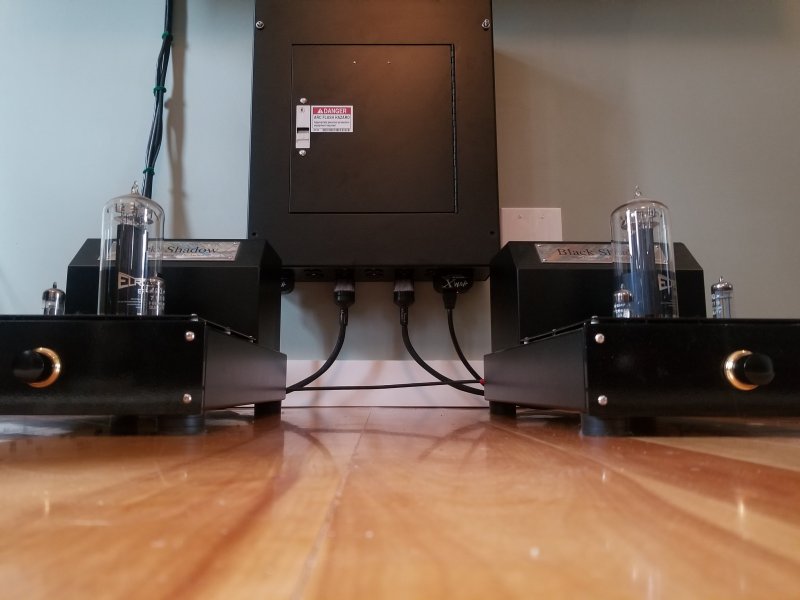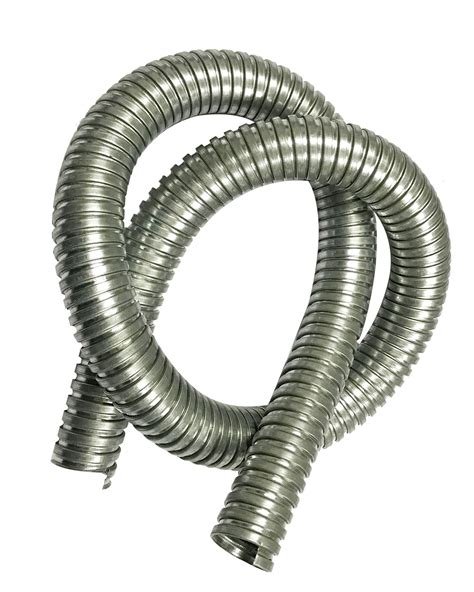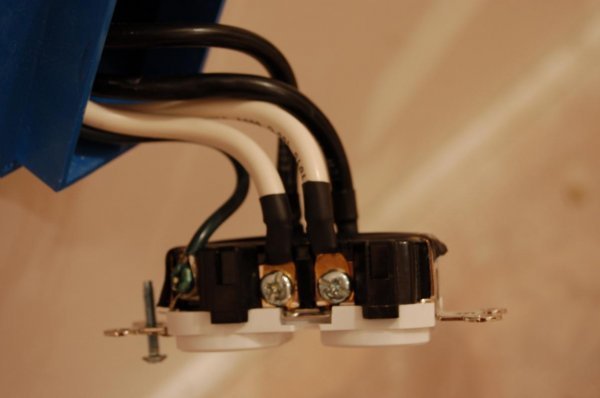My belief is, every break in the power line is an opportunity for insertion losses. Every power cord is 6 breaks that are most likely dissimilar metal contact points. You have screws holding a wire to the duplex, the blade of power cord into a duplex, the cord end screws to cord wire. This is all on both ends of the wire. A simple power distributor is break points and metals that add colors. You can very much alter the sound of your stereo with a power cord, duplex and power strips.
What does this mean. If you only have 1 or 2 duplex at the rack and you have 6 or 7 power cords, you have to have a power strip. If your building out a room, I always advocate multiple branch circuits to a single duplex each, partly to eliminate the need for a power distributor.
I made a power strip years back. I still use it at it works so well. Let it be known this image is not NEC compliant. A power cord is suppose to have 2 ends. I made a more industrial connection and bolted the wires together in the wall. There is no duplex or male ends from the wall to power strip. In keeping with this idea, the 2 cords exiting the unit are also bolted inside the power strip and go to my preamp. This is sonically by far the best sounding application I have tried. Its not legal.
The 2 wires to the left, out the wall. That is how I compare inwall wire. I don't want a duplex and power cord influencing the sound. That is my twisted wire and a 10 awg romex, both with the same Furutech end directly from my power panel to my amp. No breaks, no duplex, no power cord. Just the wire and a cord end. This way I can quickly move between 2 wires and asses the sonic signature. I have a chunk of Encore steel MC in my basement I am going to insert soon and listen to.
The other image is how "I" like to splice in a wall. Good luck getting an electrician to do this. A wire nut is what they will use. But a wire nut creates vortices and eddie currents where the wires are place parallel. And an engineer told me the wire spring in the wire nut becomes a tiny transformer. All noise. Audible???? I'm just experimenting and going as far as I can.
This last wire splice is how I would do a double duplex. I never break the primary branch wire. I strip a little casing back and use an Ilsco C crimp to lock a tag end onto the wire. This is difficult to do correctly. This splice is NEC complient and uses UL parts. Totally legal. Your not going to get your electrician to do this. But its fundamentally better practice on many levels.
A power strip and power filter are 2 totally different devices. A power strip has no filters at all. Maybe a built in SPD. A filter is just that. If you need to distribute power, you can use either. My personal preference is a large isolation transformer in another room and multiple branches to the room. Or a large isolation transformer to branches with a power strip in the room to allow multiple devices to be landed.
I have also shipped a couple of these integrated power panels. These are UL listed and labeled and NEC compliant. They take up to a 200 amp feed and have 8 individual duplex built in. Its just a way to get loads of power to rack with many power hungry devices. The cover opens and there are 8 x AFCI breakers inside.
Rex
